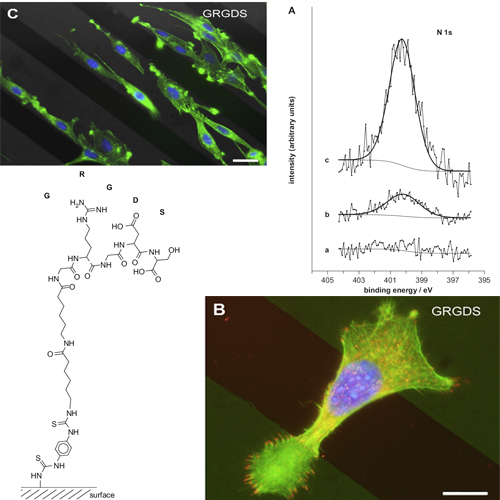Isothiocyanate-functionalized RGD peptides for tailoring cell-adhesive surface patterns
22-Apr-2008
With the advances made in surface patterning by micro- and nanotechnology, alternative methods to immobilize biomolecules for different purposes are highly desired. RGD peptides are commonly used to create cell-attractive surfaces for cell-biological and also medical applications. We have developed a fast, one-step method to bind RGD peptides covalently to surfaces by thiourea formation, which can be applied to structured and unstructured materials. RGD peptides were fused to an isothiocyanate anchor during synthesis and directly immobilized on amino-terminated surfaces. The spreading behavior of fibroblasts and the formation of focal contacts served to prove the applicability of the coupling method. Two different linear peptides and one cyclic peptide were compared. All the peptides induced spreading behavior and the formation of focal contacts in murine fibroblasts. Adhesion was specific as cells neither recognized the corresponding negative control peptides nor spread in the presence of soluble H-RGDSOH peptide. We successfully applied our coupling method to functionalize surface patterns created by microcontact printing (mCP) and chemical etching. Cells recognize areas selectively coated with RGDcontaining peptides, proliferate and maintain this preference during long-term cultivation. Our method significantly facilitates surface modification with any kind of peptide – even for the preparation of peptide-functionalized small surface areas.











